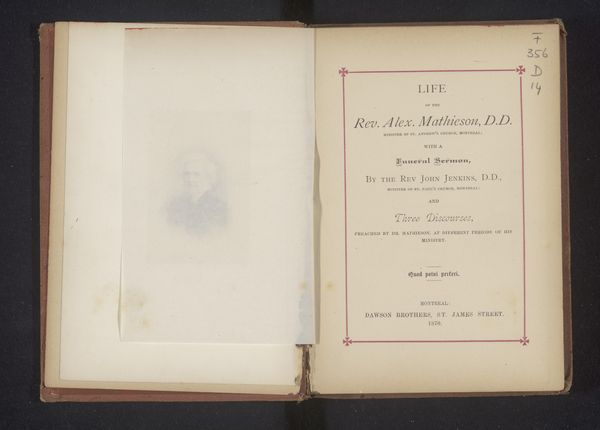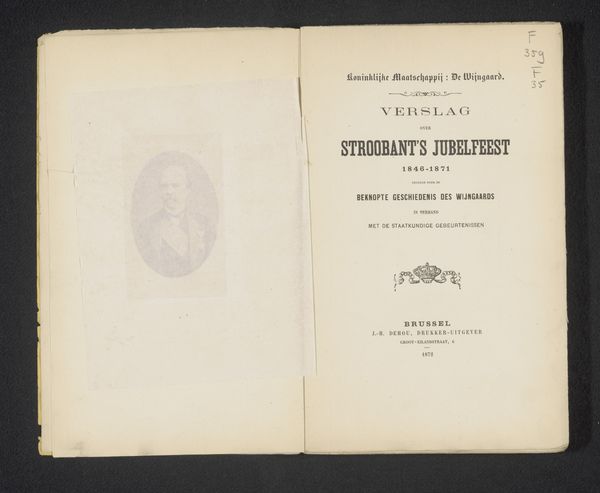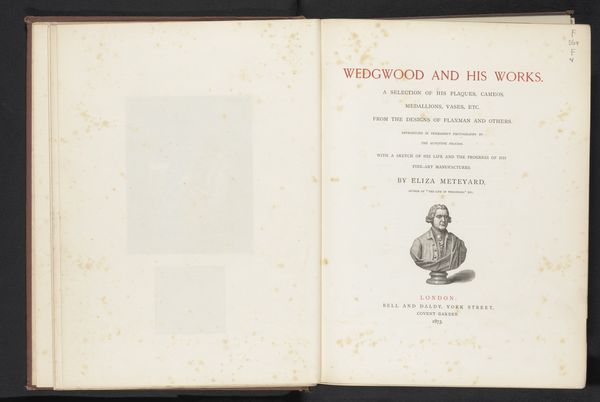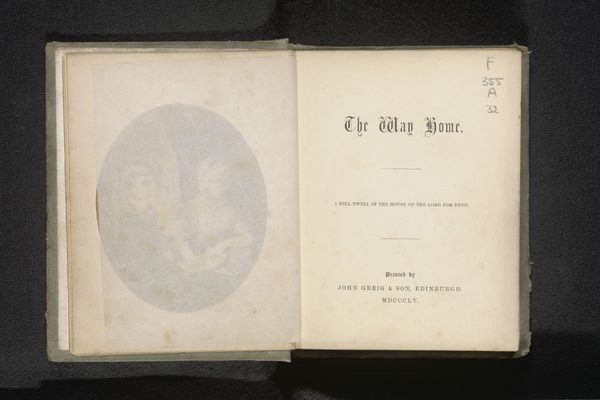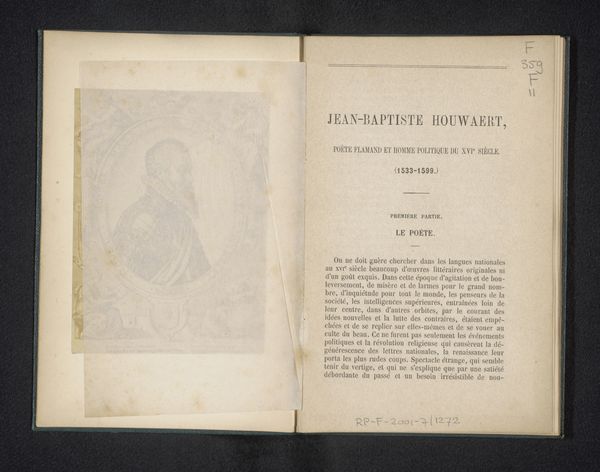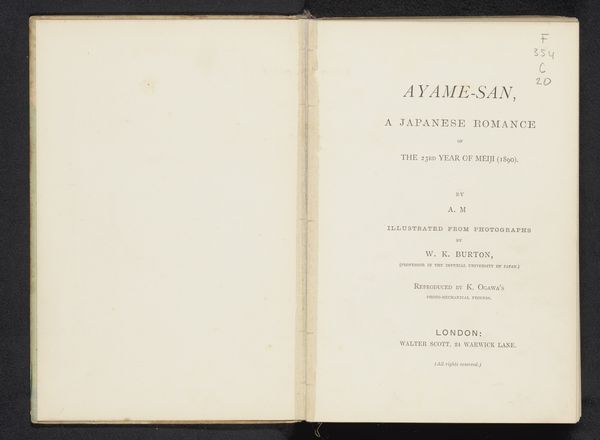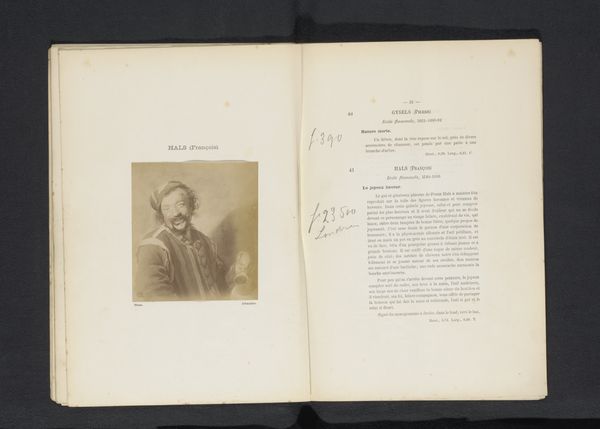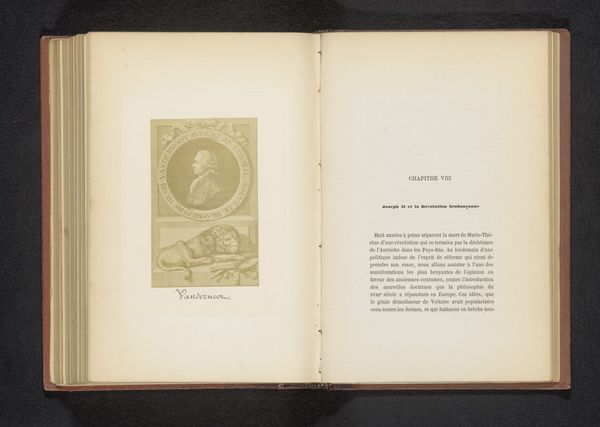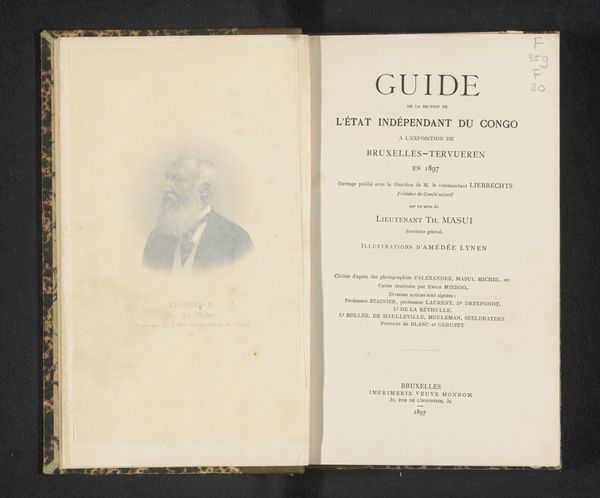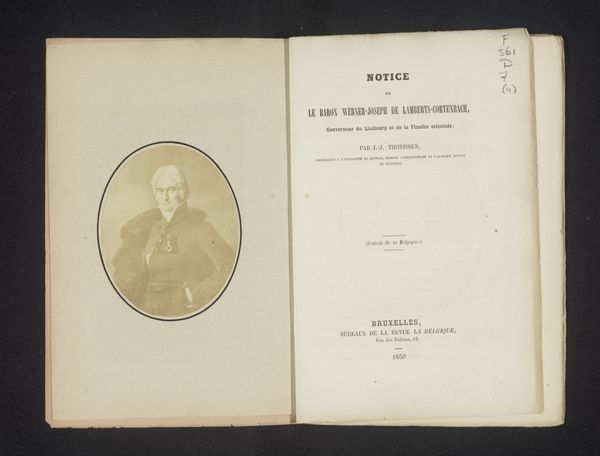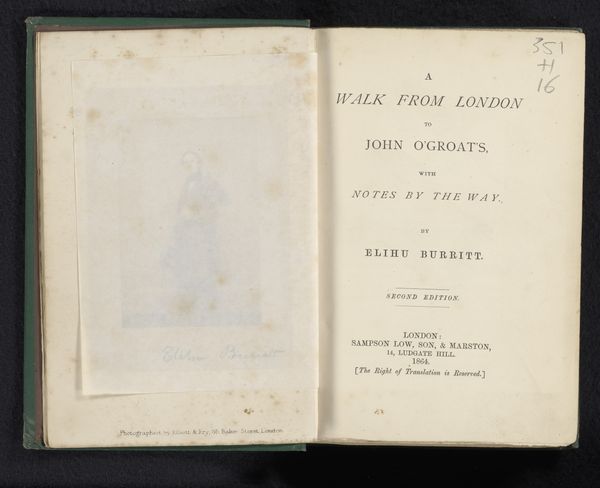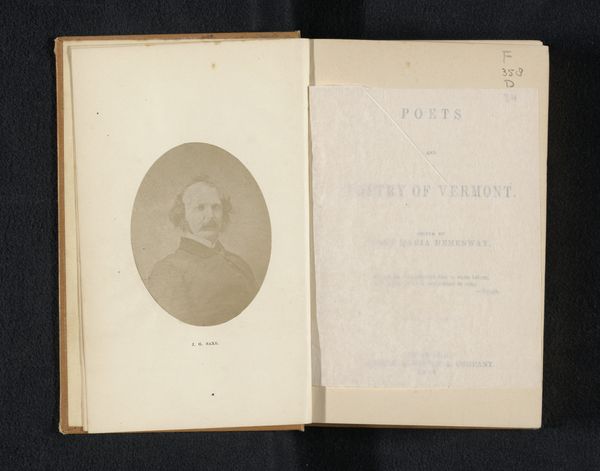
print, paper
#
aged paper
#
homemade paper
#
paper non-digital material
#
paperlike
# print
#
book
#
sketch book
#
personal journal design
#
paper texture
#
paper
#
personal sketchbook
#
folded paper
#
design on paper
Dimensions: height 165 mm, width 105 mm, thickness 28 mm
Copyright: Rijks Museum: Open Domain
Editor: This is "Yesterday, today and for ever," an 1878 print. The facing pages feature an oval portrait on aged paper and crisp typography. The physicality of the book is intriguing. What stands out to you? Curator: The book's construction speaks volumes. Consider the materiality of the paper itself – probably wood pulp, a relatively new, mass-produced substance at the time. What implications did the use of this kind of inexpensive stock have for literary accessibility? Editor: That’s interesting, I hadn’t thought of that. Was the printing process also undergoing significant change then? Curator: Precisely. This was the era of industrial printing – steam-powered presses churning out impressions quickly and cheaply. How did this impact the role of the artisan printer and the perception of "quality" in bookmaking? The choice of typeface and the layout further underscore how industrialization impacted the aesthetic experience of devotional books. Editor: So, even something seemingly simple like this book reflects broader changes in production and consumption. Curator: Exactly! By examining the materials and mode of production, we gain insight into how this devotional text reached a wider audience and the shifts happening within the publishing industry. It moves devotional experience beyond individual reading into mass-produced culture. Editor: It makes me think differently about the labour behind even the most modest-looking object. Thank you. Curator: Likewise, reflecting on mass devotional texts highlights the importance of looking closely at both the religious and industrial dimensions.
Comments
No comments
Be the first to comment and join the conversation on the ultimate creative platform.
